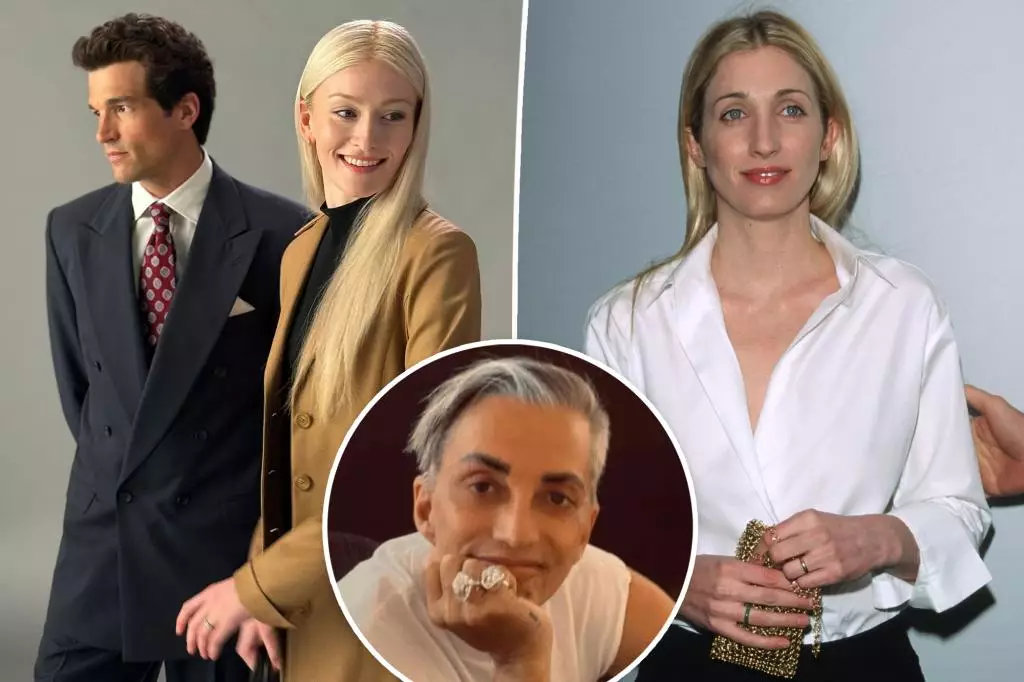In the realm of fashion and cultural storytelling, few figures shine as brightly as Carolyn Bessette-Kennedy. Recently, anticipation surged when Ryan Murphy unveiled the first look at his FX series “American Love Story,” spotlighting the captivating romance between Bessette-Kennedy and John F. Kennedy Jr. Social media erupted with both excitement and criticism as the initial images made their rounds, highlighting not only the breadth of her influence but also the struggles of accurately portraying such an iconic figure.
The initial stir primarily stemmed from the portrayal of Bessette-Kennedy’s signature style, prompting commentaries that sparked discussions well beyond fashion. Fans and critics alike were quick to note the discrepancies between the imagery presented and the distinct aesthetics that characterized Carolyn’s public persona, igniting passionate debates about authenticity in storytelling.
The Hair Controversy: A Reflection of Misrepresentation
One of the most contentious aspects of the first look was the representation of Carolyn’s hair, which sparked a wave of criticism primarily from those who knew her best. Hair colorist Brad Johns, who had an intimate professional relationship with Bessette-Kennedy, voiced his dismay over the depiction of her iconic hairstyle. His recollections of Carolyn’s hair—a harmonious blend of darker shades with brilliant gold highlights—reflect an inherent understanding of the subtleties that made her style unique. The portrayal in the initial images, described as “white and burnt,” didn’t just miss the mark; it misrepresented a woman who was an epitome of sophistication and grace.
Johns emphasizes an essential principle in hair styling, especially regarding color selection: the right shade can elevate one’s appearance, while inappropriate hues can detract from it. He passionately argues that “gold makes women look beautiful,” and in Carolyn’s case, her hair was never intended to reflect the muted tones that often equate to a lack of vitality. This intimate understanding of her beauty and the unspoken rules surrounding it mirrors her essence—a blend of elegance and vivacity.
The Heart Behind the Glamour
John’s relationship with Bessette-Kennedy showcases the profound connection that can exist between a stylist and their client. His recounting of their first meeting illustrates more than just a transactional exchange; it’s a narrative steeped in trust and ambition. When Carolyn expressed her desire to transform her look, Johns not only met her request but also infused the process with his artistic vision. Their collaboration symbolizes a foundational element of the fashion world—shaping identities through beauty and style.
The nuances of their interactions also reveal a softer side to Bessette-Kennedy, showcasing her humor and charm. As Johns describes the aura she brought to a room, one cannot ignore the lasting impression she left not only in the salons she frequented but also across the cultural landscape. This very essence makes her a challenging figure to portray in any medium, as her influence transcended mere aesthetics.
Ryan Murphy’s Response and the Weight of Legacy
The backlash surrounding the initial images prompted Ryan Murphy to respond, emphasizing the unfinished nature of the project and the desire for authenticity in representation. His decision to involve fashion bloggers in the creative process and enlist an advisory committee underscores a significant shift in how tales of cultural icons are crafted today.
Murphy’s admission of underestimating public interest reflects a broader phenomenon—how contemporary audiences are not just passive consumers of media but actively engaged participants who expect fidelity to the essence of what these figures represent. The decision to showcase vintage pieces owned by Bessette-Kennedy speaks to a genuine effort to reconnect with the source of her influence.
Fashion as a Catalyst for Storytelling
The dialogue sparked by Bessette-Kennedy’s portrayal reveals a vital truth: fashion is not just about aesthetics; it is a rich narrative medium through which cultural history and individual stories are conveyed. Carolyn’s legacy is a testament to the idea that style can be an empowering force, transcending time and context.
As the film progresses through its pre-production phases, one can’t help but hope that the legitimate voice and spirit of Carolyn Bessette-Kennedy will not only be honored but also brought to life in a manner that encapsulates both her beauty and her complexity. The challenge lies in looking beyond the surface and finding a portrayal that acknowledges her lasting impact—a journey that has only just begun.

